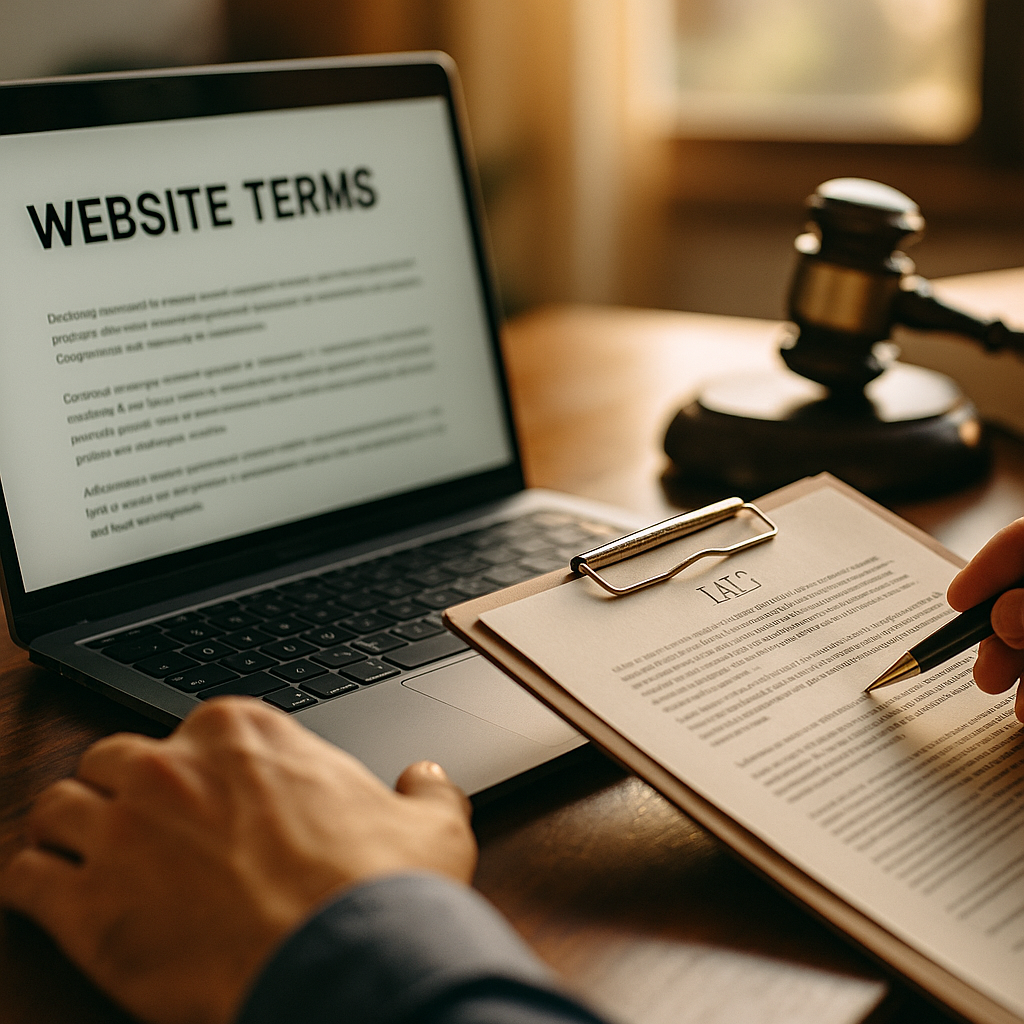Writing clear and effective website terms and conditions is vital for protecting your business, setting user expectations, and ensuring legal compliance. A well-crafted document not only shields you from liability but also builds user trust. But, how do you write terms that are easy to understand, legally robust, and tailored to your needs?
Understanding the Purpose of Website Terms and Conditions
Website terms and conditions, often called T&Cs or Terms of Service, serve as a legal contract between you and your users. This agreement outlines both parties’ rights, responsibilities, and restrictions while users interact with your website. In today’s digitally driven marketplace, clear terms protect your intellectual property, limit your liability, and clarify dispute resolutions. Ignoring this critical document can leave your site exposed to lawsuits, data breaches, and reputational harm. Furthermore, transparent T&Cs support Ethical, Expert, Authoritative, and Trustworthy (EEAT) principles, reassuring both users and search engines about your site’s professionalism.
Key Sections to Include in Your Website Terms and Conditions Agreement
To write an effective terms and conditions agreement, certain core sections should be included to ensure coverage of all legal bases and user expectations. While every website is unique, most agreements should address the following:
- Introduction: Specify the document’s intent and to whom it applies.
- User Obligations: Lay out user responsibilities, including rules against misconduct or misuse.
- Intellectual Property: Declare ownership of website content, trademarks, and copyrights.
- Limitation of Liability: Set limits to your legal exposure concerning user actions or third-party interactions.
- Dispute Resolution: Describe how conflicts will be resolved, such as through arbitration or choice of jurisdiction.
- Privacy and Data Protection: Reference your privacy policy and data handling practices for complete transparency.
Covering these elements not only demonstrates professionalism but also aligns with the best EEAT practices—making your terms easy to find, read, and rely on.
Writing Clear and User-Friendly Legal Language
Legal jargon is a common pitfall when drafting website terms and conditions. However, clarity is essential for enforceability and user trust. To create user-friendly terms in line with EEAT guidelines:
- Use plain English: Avoid complex legal terms. Write in short sentences and define any necessary legal terms in simple language.
- Structure logically: Use bullet points, sections, and headings to break up detailed clauses. This enhances readability and helps users quickly locate important information.
- Be specific: Vague terminology can undermine enforceability. Specify exactly what users can and cannot do, and under what circumstances.
- Update regularly: Laws and digital practices evolve. In 2025, regular reviews ensure ongoing compliance and relevance.
Clear writing not only aligns with best practices for transparency and accessibility but also earns user goodwill, signaling honesty and reliability.
Ensuring Legal Compliance and Adaptability
Legal compliance is a non-negotiable aspect of website terms and conditions. With regulations like the GDPR, CCPA, and increased scrutiny on consumer rights, your T&Cs must reflect current laws. To ensure legal alignment:
- Consult a qualified lawyer familiar with digital and e-commerce law in your jurisdiction.
- Reference all relevant privacy and data protection laws. If your site serves international users, address the extra-territorial implications.
- Adapt your terms for future changes in technology, such as AI usage, payment methods, or dispute processes.
- Include a clause explaining how you will notify users of updates, with an effective date at the top of the document.
Legal compliance demonstrates your site’s authority and credibility, satisfying EEAT’s emphasis on expertise and trustworthiness. Review your terms frequently to remain agile as new legislation emerges.
Making Your Website Terms and Conditions Accessible and Actionable
Even the best-drafted website terms and conditions are ineffective if users can’t find or understand them. For optimal transparency and legal protection:
- Display prominently: Link your T&Cs in the footer of every page and within registration or checkout processes.
- Require agreement: Use active consent methods (like checkboxes) for sign-ups or purchases to prove user acknowledgment.
- Encourage user feedback: Provide contact details or a form for questions, fulfilling EEAT’s engagement factor.
- Monitor analytics: Check whether users are viewing your T&Cs page, and adjust its visibility or language based on data-driven insights.
Accessibility, combined with clarity, not only protects your business but also signals ethical online conduct, increasing both user and search engine trust.
FAQs about Writing Website Terms and Conditions in 2025
-
Do I need a lawyer to draft website terms and conditions?
While online templates can help you get started, consulting a qualified lawyer guarantees compliance with the latest laws and regulations affecting your business in 2025.
-
How often should I update my website terms and conditions?
Review and update your terms at least annually, or whenever there are significant legal changes, new features on your site, or shifts in business strategy.
-
Are website terms and conditions legally binding?
Yes, if users are clearly notified of and agree to your T&Cs, the agreement is legally enforceable. Ensure users provide active consent during registration or checkout.
-
What happens if users violate my terms and conditions?
Violations may allow you to suspend or terminate accounts, pursue legal action, or seek remedies specified in your agreement. Detail the process and potential consequences in your T&Cs.
-
Can I use someone else’s terms and conditions for my website?
Copying another site’s T&Cs is risky. Your policies should be tailored to your specific business, industry, and legal requirements to ensure full protection and compliance.
Writing website terms and conditions requires clarity, specificity, and a strong legal foundation. By creating transparent, user-friendly agreements, you protect your business and enhance trust with your users. Prioritizing accessibility, legal compliance, and regular updates will ensure your website thrives in 2025 and beyond.
